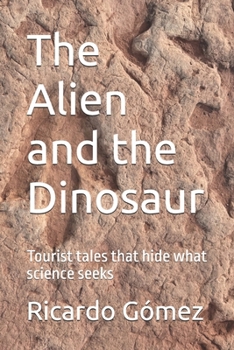The Alien and the Dinosaur: Tourist tales that hide what science seeks
When Sarah Running Bear's car breaks down at a roadside tourist attraction in northern Arizona, she expects nothing more than an annoying delay. Instead, she finds herself drawn into an intricate web of mystery spanning generations. The site guide, Thomas Begay, spins entertaining tales about aliens teaching dinosaurs to dance - stories so absurd that tourists share them without a second thought. But beneath his theatrical performance lies a sophistication that catches Sarah's professional attention.
As a paleontologist specializing in prehistoric trackways, Sarah knows these rock formations hold vital scientific data. What she doesn't expect is to discover that generations of tour guides have been encoding complex mathematical patterns in their seemingly ridiculous stories. When Danny, a mathematically gifted teenager, starts finding precise geometric progressions hidden in Thomas's "dance step" descriptions, it becomes clear these tourist tales are more than mere entertainment.
But they aren't the only ones decoding the patterns. Unauthorized excavations are targeting multiple sites, using the old tourist stories like survey maps. As university administrators demand immediate documentation and government agencies begin taking interest, Sarah and Thomas race to understand what the pattern network has been protecting - and why knowledge that spans cultures and continents was hidden in tales of aliens and dancing dinosaurs.
Weaving between modern day and 1942, when the first bones were discovered, "The Alien and the Dinosaur" explores how different cultures preserve their most important knowledge. It's a story about the intersection of science and tradition, about the power of stories to both reveal and protect truth, and about what happens when we try to force discovery instead of letting understanding develop naturally.
Sometimes the most effective way to hide something isn't to lock it away, but to wrap it in stories so strange that no one thinks to look deeper.





